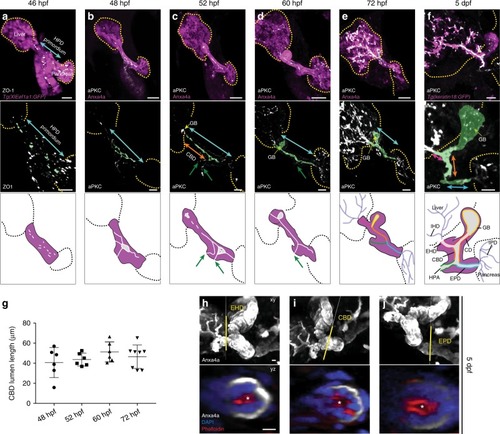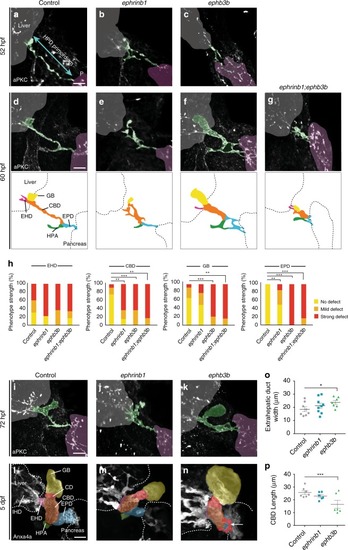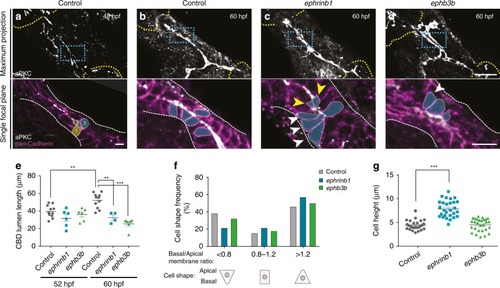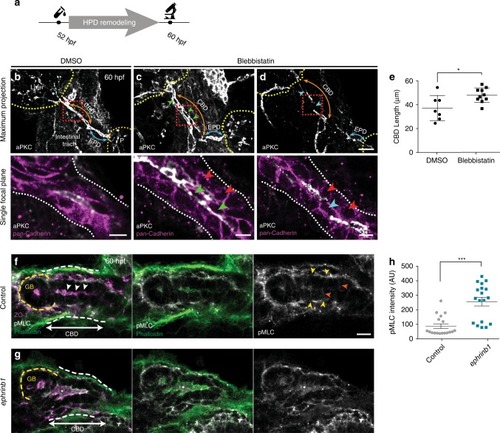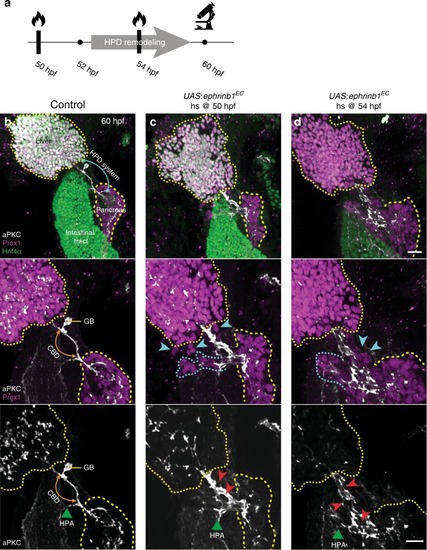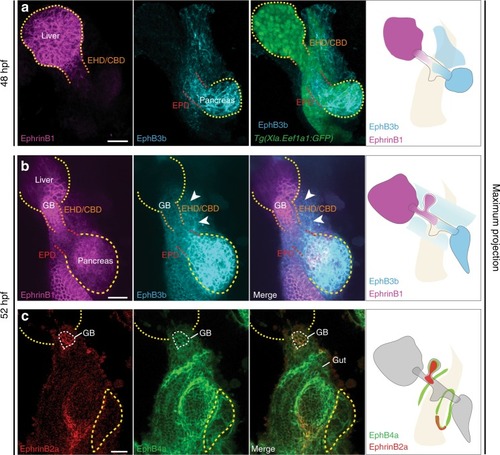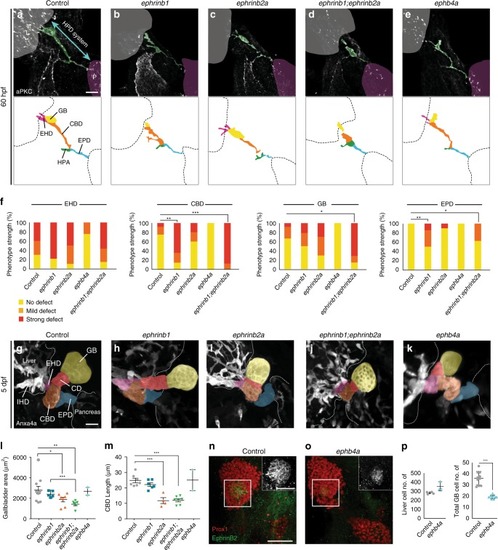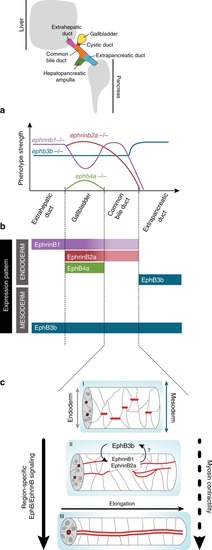- Title
-
A morphogenetic EphB/EphrinB code controls hepatopancreatic duct formation
- Authors
- Thestrup, M.I., Caviglia, S., Cayuso, J., Heyne, R.L.S., Ahmad, R., Hofmeister, W., Satriano, L., Wilkinson, D.G., Andersen, J.B., Ober, E.A.
- Source
- Full text @ Nat. Commun.
|
The HPD system forms by de novo tubulogenesis. |
|
EphrinB1 and EphB3b control HPD remodeling in a spatiotemporal fashion. Compared to sibling controls at 52 hpf ( |
|
Ductal cell rearrangement and lumen resolution require EphrinB1 and EphB3b. |
|
HPD differentiation requires EphrinB1-controlled actomyosin contractility. PHENOTYPE:
|
|
EphB/EphrinB signaling controls HPD lumen morphogenesis independently of other morphogenetic roles. |
|
Regionalized HPD endoderm and mesoderm expression of multiple EphrinBs and EphBs. EXPRESSION / LABELING:
|
|
EphrinB2a and EphB4 functions in gallbladder and CBD formation. Unlike sibling controls ( PHENOTYPE:
|
|
An EphB/EphrinB code and myosin II contractility control HPD tubulogenesis. |

